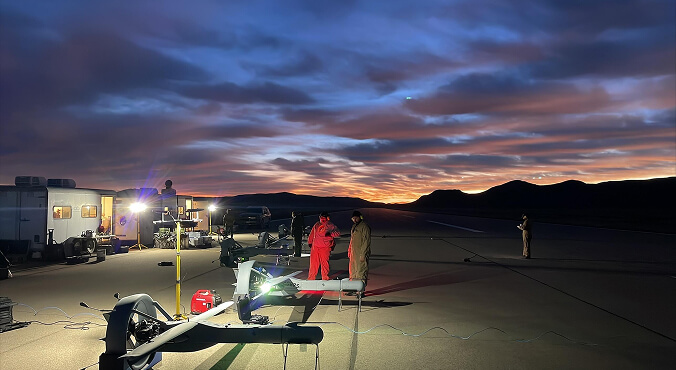[December 6, 2021]
Tesla Shows Us The Risks When Dominant Incumbents Fail To Be Bold

China’s military is Netflix; the U.S. military is Blockbuster.
China is Amazon; the U.S. is Barnes & Noble.
China is Tesla; the U.S. is General Motors.
People thought the automotive industry could not be disrupted and that Ford, GM and Toyota had preordained rights to be the leaders for the next thousand years. Automotive executives mocked and balked at the idea an outsider could do what they do. They spent billions on research and development; they allocated billions in resources and thousands of people to their products and capabilities. Yet here we are today, after less than a decade: Tesla is a $1 trillion company; it has dethroned the incumbents.
Militarily, China is Tesla: moving at blazingly fast speeds with a sense of purpose and urgency, ruthlessly prioritizing what matters, cutting things that don’t and very much understanding what is at stake. China’s recent hypersonic missile tests serve as perfect examples of a country pushing harder than ever in preparation to win the next war.
The United States is GM: doing what we’ve always done by building a good product — but not a transformational one, unable to get out of the way of our own bureaucracy, unable to be nimble or allocate resources in an efficient way to things that matter, and unable to do anything to counter the momentum and speed of Tesla. Like GM, the U.S. appears stuck in a state of status quo, as if we are preparing for Desert Storm in 1991 — continuing to allocate the bulk of our resources to antiquated aircraft carriers, tanks and helicopters.
GM did not enact bold, radical action to counter Tesla with any sense of urgency. And it lost. For that reason, I worry that the story between China and the U.S., as it relates to defense and national security, will play out just as the story of Tesla and GM has, or like so many other Davids and Goliaths.
In my position, I get to engage with military and congressional leaders, and no one feels good about where we stand with China militarily. There is a list of nuanced reasons why, and a list of nuanced suggested solutions. But to keep things simple and actionable, the heart of it is that we don’t feel good because we keep spending the bulk of our money on the same good products. These are the good products that yielded victory in World War II and the Cold War, and proved their worth post-Sept. 11 against an enemy whose most sophisticated weapon was an AK-47.
Sure, we are spending some money on capabilities that are worthwhile, but the truth is we allocate an enormous amount of resources on products and capabilities that simply won’t move the needle in a hot or cold war against China, and we need new transformational products and capabilities that will.
We lack the boldness, will and creativity to cut things that don’t matter — to free up resources to allocate and supercharge the transformational products that do.
It is hard to disrupt yourself. Cutting things and then placing the right bets once you have made the cuts is hard. I empathize with Congress and the military regarding the magnitude of the problem, but failing to address it will result in a new world order where the U.S. military is not dominant and where the values embodied in our Constitution and Declaration of Independence — that serve as a shining light for the U.S. and the world — will dim.
So where can we start to solve the problem? A good place to start would be to ask ourselves one question: Is this product or capability truly going to move the needle in a war against China? If the answer is “no,” then cut it and move those resources to something that will. Resources are precious, constrained and must be allocated to the things that matter most. Hard conversations must be had, and feelings will be hurt. Does the U.S. really need another 60 warships that travel at 25 knots but don’t stand a chance against a barrage of long-range anti-ship missiles traveling at supersonic speeds? Do we really need to spend millions of dollars on a lighter squad automatic weapon because our warfighters carry a lot of weight? Do we really need new armored vehicles that will be easy targets for anti-armor rockets? If we didn’t need these, what would we spend the money on?
Let’s be dispassionate as we answer those questions, and war game and debate the merits of products and capabilities we buy and invest in today. We need to spend on products and capabilities that can operate inside a weapons engagement zone, without GPS or communications, and shorten a kill chain. If it can’t do that, cut it.
At the Air Force Association’s 2021 Air, Space and Cyber Conference, Secretary of the Air Force Frank Kendall stated: “2027 is when China will reach parity with the U.S.” Applying this logic, 2028 must be when China will surpass the U.S. if no bold actions are taken to prevent this.
Without bold actions, we will be in the same shoes as the leaders, employees and shareholders of Blockbuster, Barnes & Noble, and GM — defeated.
Read more on DefenseNews









